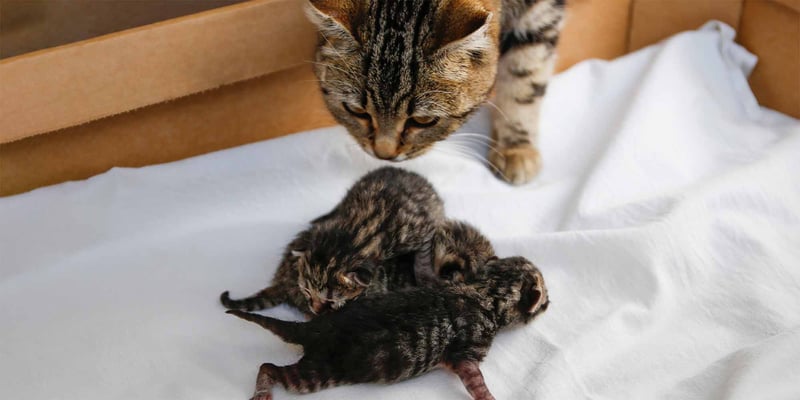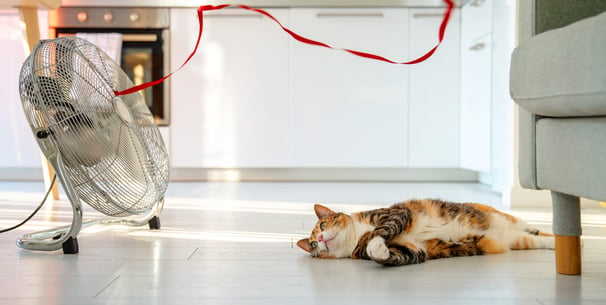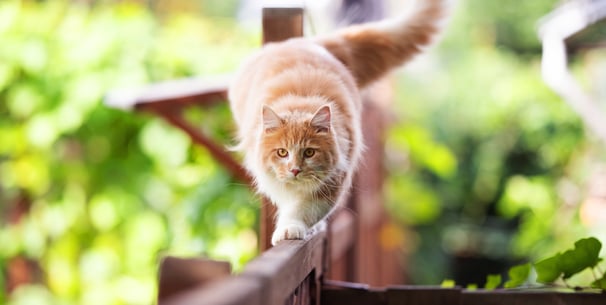Do Cats Have Belly Buttons? The Disappearance of The Belly Button
Index:



Introduction
So you’re probably here because you feel a bit confused. Maybe you woke up in the night with the sudden urge to find out if placental mammals like cats have belly buttons. We get it and we’re here to help you find the answers.
Cats, like all mammals, have a belly button. It’s also known as a navel or umbilicus. If you’re not familiar with what a belly button is, it’s the scar left behind after the umbilical cord stump is cut and falls off shortly after birth. This process involves the cessation of blood flow through the blood vessels of the umbilical cord.
While a cat's belly button may not seem like an important feature to understand, there are a few reasons why it's worth knowing about which we’re here to discuss in this article. We’ll also tell you how to find it, don’t worry.
Finding your cat's belly button



At first glance, you probably won’t be able to see your cat’s belly button. To locate it, look below the ribcage for a small, white scar on the abdominal wall. It’s not as obvious to see as a human belly button and it will most likely be surrounded by belly fur.
Gently part the fur with your fingers and feel for the scar, it’s often raised or sunken into the skin. It's important to note that not all cats have visible belly buttons, especially if they have thick fur or a lot of excess skin around the abdomen, like in the case of the primordial pouch. Additionally, the belly button may be difficult to find in cats that have had any sort of abdominal surgery, such as spaying or neutering, as the spay scar may be hidden or not present at all.
It’s best to try and look for it when your cat is relaxed as you don’t want to agitate them or cause them to feel stressed. It can be a difficult task so don’t feel too disheartened if you can’t find it at first, it might be one to ask your vet the next time your cat goes for a check-up!
The function of a cat's belly button



The purpose of a cat’s belly button is the same as a human belly button; to mark where the umbilical cord was attached during pregnancy. The umbilical cord helps nutrients and oxygen to be passed from mother to baby in the gestation period. It essentially acts as a lifeline, connecting the mother’s placenta to the foetus so it can continue to develop and grow. This process involves the exchange of nutrients and waste products between the mother and the developing kitten.
Whilst there are similarities between human and cat belly buttons, the process of pregnancy and birth in cat species differs from that of humans in several ways.
For example, cats have a relatively short gestation period of around 63-65 days, compared to humans who have a gestation period of approximately 280 days. The umbilical cord in cats is relatively short and narrow, whereas, in humans, it is longer and thicker.
In cats, the umbilical cord typically falls off shortly after birth, leaving behind a small scar that marks the location of the belly button. In humans, the umbilical cord is clamped and cut shortly after birth, leaving a stump that falls off within a few weeks, leaving behind a similar scar.
Belly buttons in cats vs humans



While both cats and humans have belly buttons, there are several differences between the two.
Firstly, the appearance of a cat's belly button is generally much smaller and less noticeable than that of a human. The scar left behind after the umbilical cord falls off in a cat is typically a small indentation or bump, whereas, in humans, the belly button is more prominent and can vary in shape and size depending on factors such as age, weight, and pregnancy.
Secondly, unlike human belly buttons, which can collect lint (ew), a cat's belly button does not tend to accumulate any material. This is due to the shape and orientation of a cat's navel being different from that of a human. The belly floof around the area also helps to keep it clean and free of debris.
Potential health issues



With any belly button, there can be potential health issues. In cats, this is often through an umbilical hernia, which is a protrusion of the abdominal area around the belly button. This type of hernia can cause swelling, discomfort, and potentially life-threatening complications if the hernia is not treated professionally.
Umbilical hernias, a common type of hernia in cats, are relatively prevalent in kittens and may be present at birth or develop shortly after. They are more common in certain breeds, such as Persians and Himalayans, and are thought to be due to a genetic predisposition.
In most cases, small umbilical hernias in cats will close on their own by the time the kitten is a few months old. However, larger or persistent hernias may require surgical correction to prevent complications.
Other potential health issues in the belly buttons of cats include infection if bacteria or pathogens enter the body. Signs that indicate a belly button infection include an umbilical infection, odour, discharge, redness, and swelling around the area.
If you’re a Waggel member, you can speak directly to a vet night or day by using Joii. Joii is an online vet care provider available through an app. Simply download and sign up to book your free consultation - it couldn’t be easier.
Preventing birth defects



Spaying or neutering is an important step in preventing birth defects and other health issues in both cats and their babies. Spaying and neutering prevent cats from reproducing and passing on any genetic abnormalities or birth defects to their offspring.
In addition to preventing the transmission of genetic abnormalities, spaying and neutering cats also have several other health benefits, such as reducing the risk of certain types of cancers and infections, and helping to control overpopulation of cats.
Some cat breeds may be more susceptible to birth defects due to a small genetic pool. This is because certain breeds of cats have been selectively bred for specific traits which can limit the genetic diversity within the breed. Over time, this can increase the likelihood of certain genetic abnormalities being passed down from one generation to the next.
To help avoid the transmission of genetic abnormalities and birth defects, responsible breeders will often screen their cats for genetic disorders and only breed cats with healthy, diverse genetic backgrounds.
When to seek veterinary care
As always, it’s super important to seek immediate veterinary care for newborn kittens and other pets whether the litter is from a planned or unplanned pregnancy.
Seeking veterinary care for newborn kittens and other pets is crucial for their health and well-being. It also helps in identifying and addressing potential health issues before they get a chance to become serious. Regular check-ups and prompt medical attention can help ensure that your pet lives a long and healthy life - and we all want that!
It’s also important to visit your vet for expert advice if you become concerned about your cat’s belly button. If you’ve noticed swelling, discharge, or odour it’s always best to get it checked out to ensure a proper diagnosis and to prevent the development of a serious health condition.
Conclusion
We hope we’ve succinctly addressed any concerns over feline belly buttons - it’s a subject surrounded by mystery! Rest assured your cat does, in fact, have a belly button, it might just be a bit hidden.
Though belly buttons in general can be a bit gross, cat ones are different to human ones and look more like small scars (thankfully cats don’t have outie belly buttons). If your cat’s belly button does look raised or is protruding, this could be a sign of a hernia or other health issue so it’s best to seek advice from a vet.
Belly buttons are an intriguing part of feline anatomy and provide a literal lifeline to kittens in the womb ensuring they have enough nutrients and oxygen.
Though they might seem invisible, your cat’s belly button can be subject to potential health issues so it’s best not to ignore it and look out for any signs of illness. To protect yourself from said illness, you should probably think of purchasing a pet insurance policy.
At Waggel, we provide just one kind of policy, Lifetime, to eliminate confusion and help pet owners get the most from their relationship with their pets instead of spending hours comparing insurance policies and suffering from dry eyes. Once you’re a member, you’ll get access to exclusive deals and discounts from independent pet brands based in the UK. You’ll also get free access to Joii, as mentioned above!
If you’ve enjoyed this article and have other cat-related questions and queries you’re too afraid to Google, allow us to recommend other blog posts such as everything you need to know about cat whiskers, what to do if your cat isn’t eating but is acting normal, and how to treat ringworm. You’re welcome.
And finally, if you are about to go and look for your cat’s belly button, good luck. And whatever you do, don’t annoy them.
Waggel Pet Insurance
Need more help? You're in luck if you're a Waggel Pet Insurance member. Along with our excellent coverage, we offer access to a 24/7 online vet to answer all your sticky questions, especially if you need grooming assistance.
Not a member? Why not get a quote now and cover your furry friend for a range of illnesses, all while enjoying our amazing perks and rewards.
Want more like this?
Get updates from us with helpful info, advice, answers to frequently asked questions and much more.
Index:
Related posts:
Get your quote
Along with our excellent coverage, we offer access to a 24/7 online vet to answer all your sticky questions.





